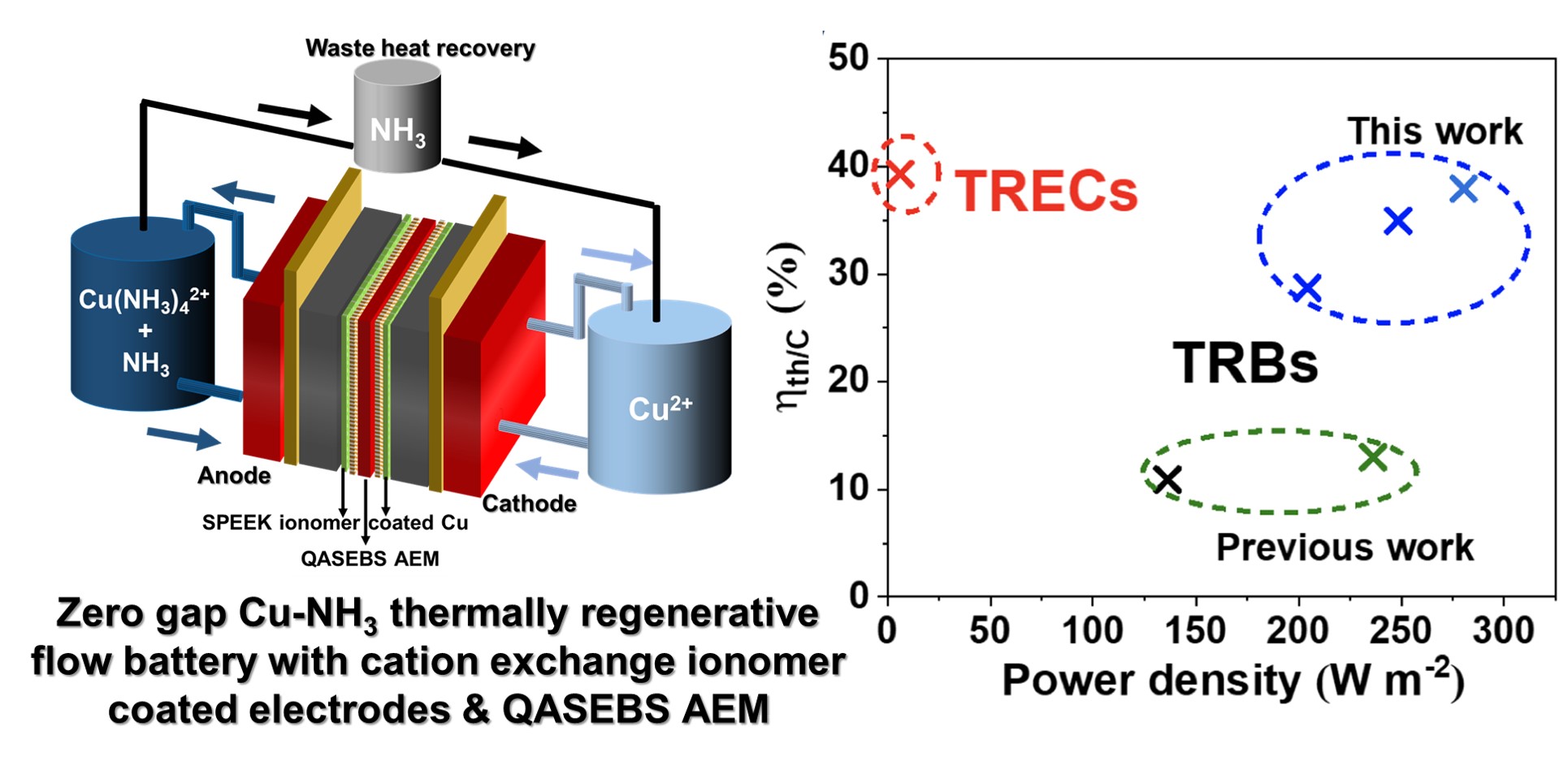(373d) A High Power Thermally Regenerative Ammonia-Copper Redox Flow Battery Enabled By a Zero Gap Cell Design, Low-Resistant Membranes and Electrode Coatings
AIChE Annual Meeting
2020
2020 Virtual AIChE Annual Meeting
Materials Engineering and Sciences Division
Excellence in Graduate Student Research (Area 08A)
Tuesday, November 17, 2020 - 8:45am to 9:00am
Thermally regenerative batteries (TRBs) are enticing prospects for the efficient conversion and storage of low-grade waste heat (T < 130 °C) to electrical energy. Low-grade waste heat makes up significant portion of rejected energy in industrial settings and is relatively untapped from geothermal sources. Several different redox couples are available for TRBs, but one of the lowest costs and straight forward redox couples is based upon copper and ammonia. Due to their nascent development, thermally regenerative ammonia-copper battery (TRAB) suffer from poor heat to electrical energy conversion efficiency (ηth). This talk will present remarkable improvements in TRAB power density and ηth through adoption of ionomer coated electrodes, a low resistant polymeric anion exchange membrane (quaternary benzyl trimethylammonium chloride poly(styrene-block-ethylene-co-butadiene-block-styrene; QASEBS), and a zero gap redox flow battery (RFB) configuration. New materials and cell design resulted in a 5.7× improvement in power density (280 W m-2) over conventional TRAB designs and it boosted the thermal efficiency (ηth) values from 0.7 % to 2.99 %. The high power TRAB devised with new ionomer materials is a significant milestone in harvesting low-grade waste heat with a modular RFB setup.
REFERENCE:
Palakkal, V. M.; Nguyen, T.; Nguyen, P.; Chernova, M.; Rubio, J.; Venugopalan, G.; Hatzell, M. C.; Zhu, X.; Arges, C. G. A High Power Thermally Regenerative Ammonia-Copper Redox Flow Battery Enabled by a Zero Gap Cell Design, Low-Resistant Membranes and Electrode Coatings. ACS Applied Energy Materials 2020. https://doi-org.libezp.lib.lsu.edu/10.1021/acsaem.0c00400.
